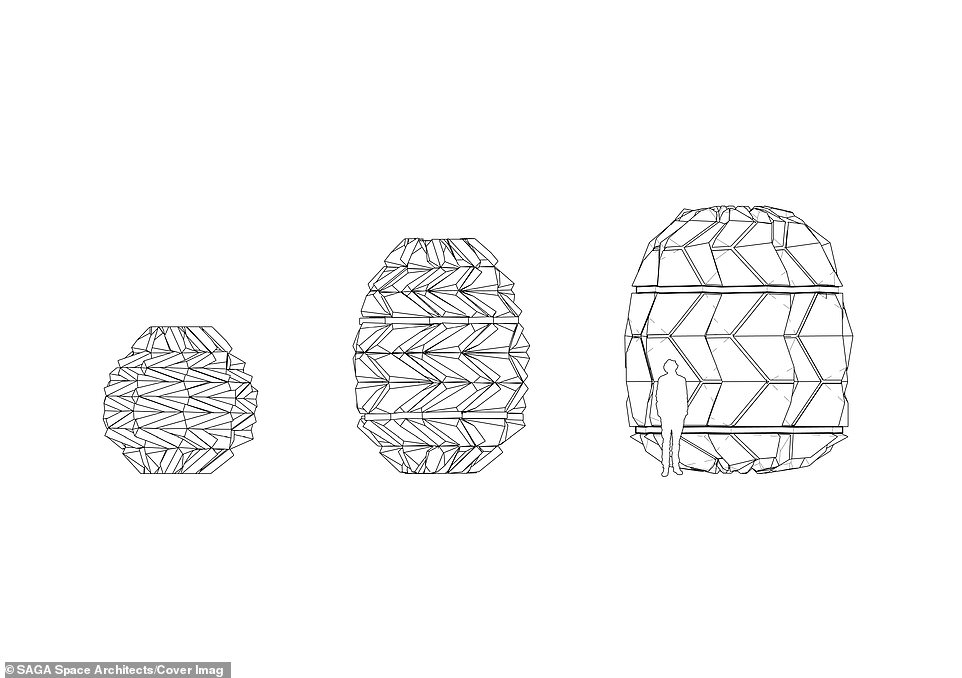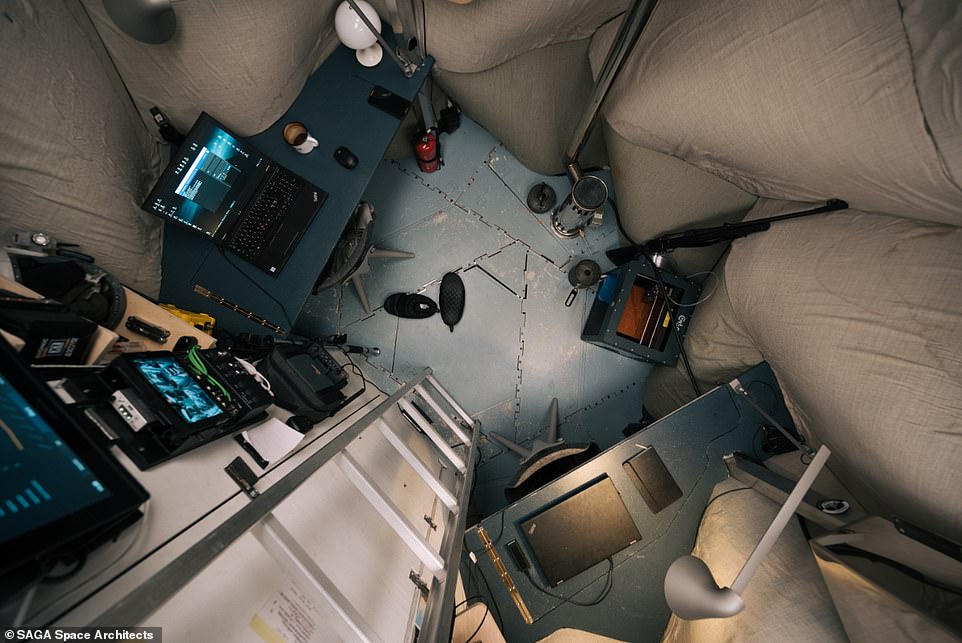
NASA's Artemis program not only hopes to land the next man and the first woman on the lunar south pole by 2024; it also expects them to spend up to seven days in the inhospitable environment, collecting samples and conducting experiments. To provide the pioneering scientists — and future space travelers — with a comfortable shelter, two enterprising Dutch architects have built a habitat capable of withstanding the Moon's harsh conditions.
The origami-inspired Lunark, designed by Sebastian Aristotelis and Karl-Johan Sørensen of SAGA Space Architects, comprises a sturdy, but lightweight, aluminum frame that can be efficiently compressed for transport to the Moon. Once the astronauts reach their destination, they can easily unfold the 607-cubic-foot mobile home, which is fitted with a bathroom, living quarters with built-in desks and shelving, and two soundproofed crew cabins. 328 solar panels on the frame help recharge the battery, ensuring uninterrupted power, while an airtight flexible seam protects residents from temperatures as low as -49° F (-45° C) and wind speeds of up to 55 miles an hour.

Though the physical comforts are impressive, even more so are the features dedicated to the astronauts' psychological well-being. A weather simulator that uses solar panels and built-in speakers to recreate varying weather patterns, like storms, rain, and a sunny day, helps alleviate the weariness of conducting repetitive tasks and looking at the same environment for extended amounts of time. To maintain a roughly 24-hour circadian rhythm, the cabin glows brightly each morning and emits warm pink, or orange, hues when it's time to sleep.
Aristotelis and Sørenson, who spent a year designing and building a prototype, recently put their creation to test in Moriusaq, Greenland. Located in an isolated region of Northern Greenland, the area boasts hurricane-force winds, temperatures of -22 °F (-30 °C), and — thanks to its location near the North Pole — 24 hours of darkness during the winter.

The space architects, who spent two months inside the capsule — from October 2 to November 30, 2020 — tried to simulate a lunar mission as much as possible. Their daily meals consisted of coffee, cold protein shakes, and hot soups, all made using powdered ingredients and water defrosted from the surrounding ice. To avoid getting tired of each other in the close quarters, they woke up and went to bed at different times. They also left their cellphones and computers at home and carried only two satellite phones for emergencies.
While they need to make a few tweaks to the final design, Aristotelis and Sørensen say the prototype exceeded their wildest expectations. "The structure itself performed really well – we could sustain a comfortable indoor climate even to the very end of the expedition, which got quite a bit colder and windier than we had anticipated." Aristotelis told the Daily Mail.

More importantly, Lunark was easy to unfold and set up without any special skills or tools, making it ideal for space tourists. Aristotelis says, "We are civilians, and if we are looking at a future with more civilians in space, that’s one of the most important things for us as architects to figure out."
Now if scientists could only figure out an economical way to send tourists to space, life would be perfect!
Resources: Newatlas.com, pressnewsagency.org, Lunark.space
